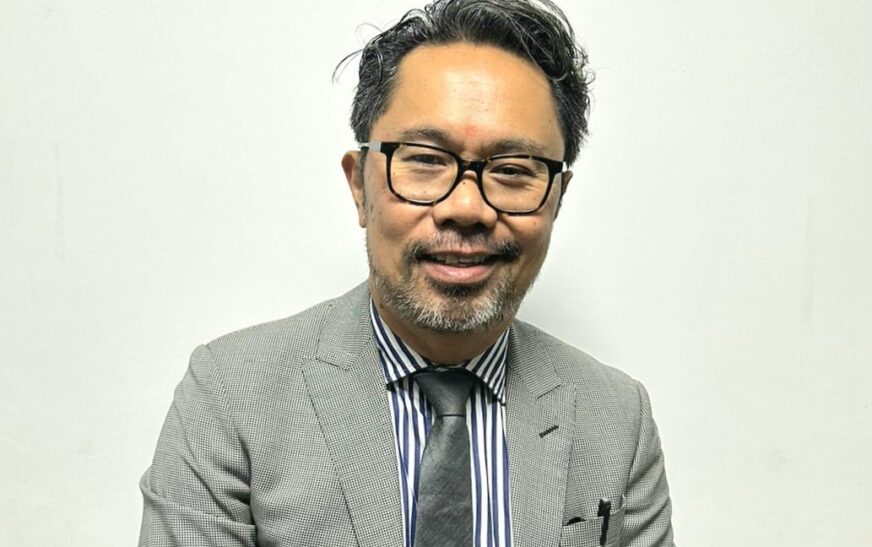Dr. Joseph M. Cheer stands as a distinguished authority in sustainable tourism and heritage. As a Professor at the School of Social Sciences, Western Sydney University, Australia, he also serves as Associate Dean, International. In 2023, he ranked among the world’s Top 2% of researchers in Sport, Leisure, and Tourism, reinforcing his status as a leading voice in global sustainable tourism.
He plays a pivotal role in shaping the future of the field. He is Co-Editor-in-Chief of Tourism Geographies, Co-Chair of the World Economic Forum’s Global Future Council on Sustainable Tourism (2023-2024), and Chair of the International Geographical Union Commission on Tourism, Leisure, and Global Change (2024-2028). Previously, he served on the PATA board and continues to advise the UNWTO’s Best Tourism Villages initiative while consulting for the Asian Development Bank.
His global influence extends across academia, holding adjunct professorships in Japan, China, New Zealand, and South Africa. With 12 books and over 70 scholarly publications to his credit, his insights are widely respected. Major international media, including The Guardian, BBC, CNBC, and Nikkei Asia, frequently feature his expert commentary.
In an exclusive conversation with The Interview World at the International Conference on Empowering Future, organized by Jaipuria School of Business, Dr. Joseph M. Cheer explores the evolving landscape of sustainable tourism. He offers strategic recommendations to transform business practices for greater sustainability, efficiency, and long-term resilience. He also highlights the key forces driving Asia’s rapid economic ascent and provides thought-provoking insights into talent reverse migration.
Here are the key takeaways from this insightful discussion.
Q: As the Co-Chair of the World Economic Forum’s Global Future Council on the Future of Sustainable Tourism (2023 & 2024), how do you envision the evolution of sustainable tourism in the near future, and what key strategies or innovations do you believe will drive its growth?
A: Tourism has surged dramatically since the pandemic, but its growth remains uneven. Some destinations experience a rapid influx of visitors, while others struggle to recover. In India, for instance, tourism concentrates in a handful of popular locations, despite the country’s vast and diverse landscape. A more balanced distribution of visitors could alleviate pressure on overcrowded sites and unlock the potential of lesser-known regions.
This pattern repeats globally. Travelers often limit themselves to two or three major cities instead of exploring beyond traditional hotspots. Meanwhile, tourism has rebounded to pre-pandemic levels just as climate change reaches a critical point. This presents a fundamental dilemma—how can we continue flying across the world while grappling with the accelerating climate crisis?
One solution lies in rethinking travel habits. Instead of long-haul trips, travelers could explore destinations closer to home. Wealthy Indian tourists, for example, might consider visiting diverse Asian countries rather than defaulting to Europe. Shifting travel behavior in this way could help strike a balance between global exploration and sustainability.
Q: What key recommendations would you offer for transforming business practices to drive sustainability, efficiency, and long-term resilience?
A: The rapid adoption of AI and emerging technologies undoubtedly enhances efficiency and improves customer satisfaction. However, we must also address a critical challenge—how these advancements impact employment in labor-intensive economies like India. As businesses streamline operations and reduce their dependence on manual labor, we must establish robust retraining programs and contingency plans for displaced workers. This concern is particularly evident in the tourism sector.
Take China, for example. Robotics now perform tasks once handled by humans, from public area cleaning to security services. While automation delivers cost savings and operational efficiency, it also displaces workers, creating significant social and economic consequences. The key question is not just whether we can implement new technologies, but how we can do so responsibly to co-create an inclusive ecosystem for technology and talent. Can we integrate automation while simultaneously equipping workers with the skills needed for the jobs of the future? A balanced approach is essential—one that fosters innovation while ensuring no one is left behind.
Q: In your speech, you highlighted the rapid growth and emergence of the Asian economy. Could you elaborate on the key drivers behind this growth?
A: I visited China last month, and it stands as a compelling model for India. Both nations share a comparable population size and a geographic bond. The real question is—what has China done to achieve such rapid and inclusive growth? That distinction is crucial. Growth alone isn’t enough; true progress lies in ensuring that prosperity reaches everyone, not just those at the top.
Economic development must go beyond mere expansion. The focus should be on fostering inclusive growth—one that distributes wealth and opportunities across the broader population. After all, sustainable progress isn’t about a select few rising; it’s about lifting an entire nation. As the saying goes, a rising tide should lift all boats—not just a privileged few.
Q: With talent reverse migration gaining momentum, how do you perceive its impact on local economies, innovation, and global workforce dynamics?
A: I highlighted this crucial point in my talk. In China, a growing number of highly skilled engineers and designers who once worked abroad are now returning. They are drawn back by the immense opportunities a thriving economy offers. However, talent alone isn’t enough—these professionals will only return if they believe policymakers and the government will support their initiatives. This lack of assurance often discourages many talent from making that move.
At a recent conference, several Indian colleagues shared a similar concern. They expressed willingness to return to India but only if they had confidence that the government would back their entrepreneurial or scientific pursuits. This remains a significant challenge. As I mentioned in my talk, the Indian diaspora holds immense expertise, with countless Indian-born professionals excelling globally. If India could create an environment that encourages their return, imagine the transformative impact on the economy.
We see this shift happening elsewhere. In countries like Australia and the U.S., top-performing students in secondary schools are often of Chinese, Indian, or Vietnamese descent. Now, in China, many of these high achievers are coming back, recognizing the improved opportunities and the government’s commitment to fostering innovation. India faces the same test—can it create the right conditions to reverse the brain drain and harness its global talent for national growth?









